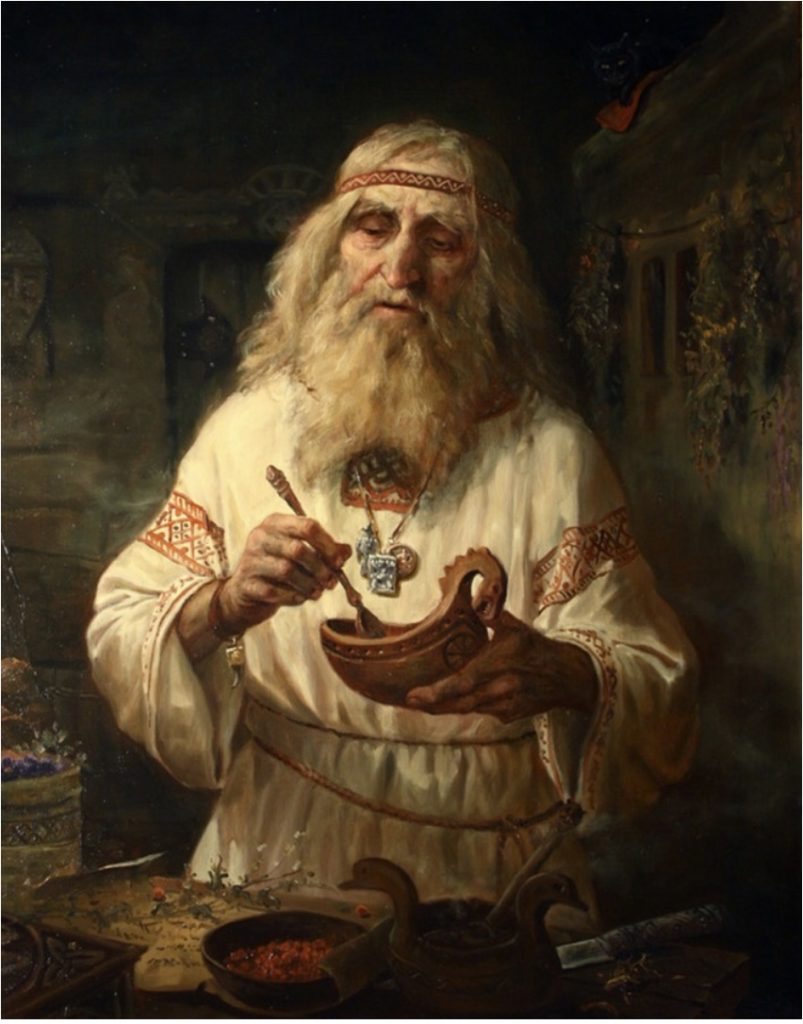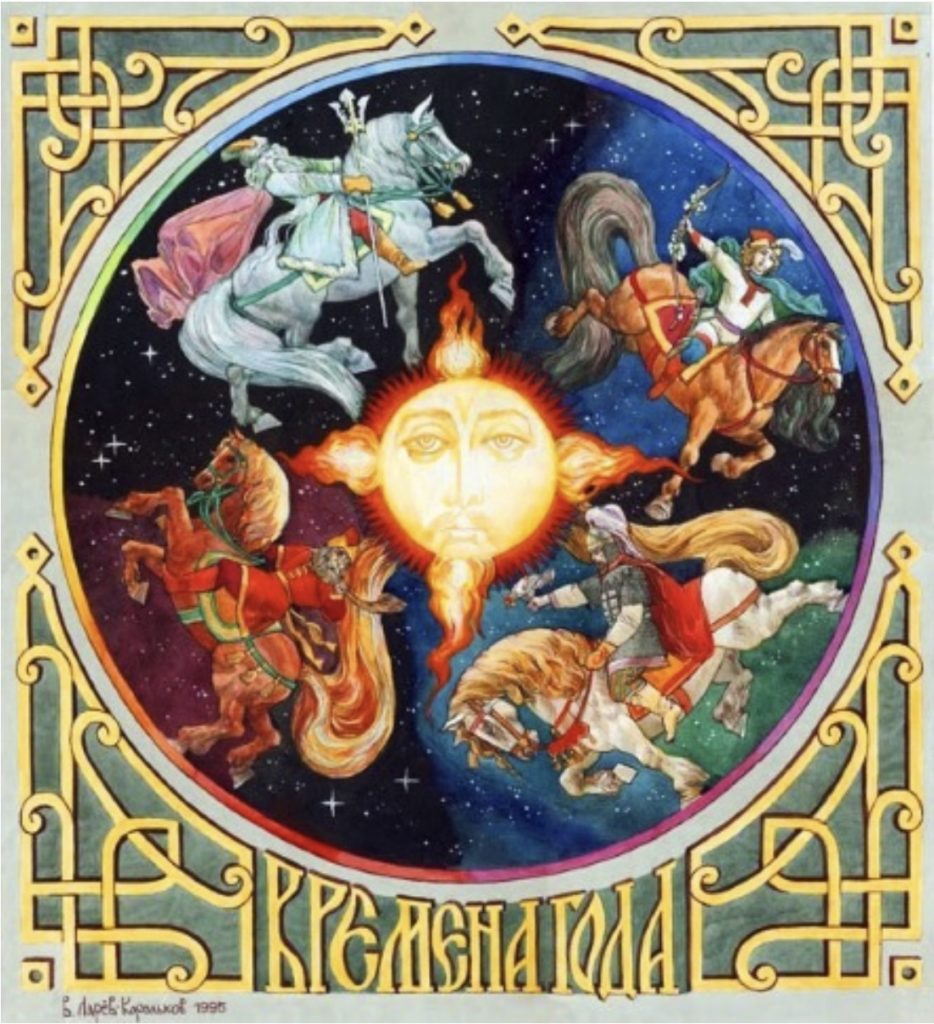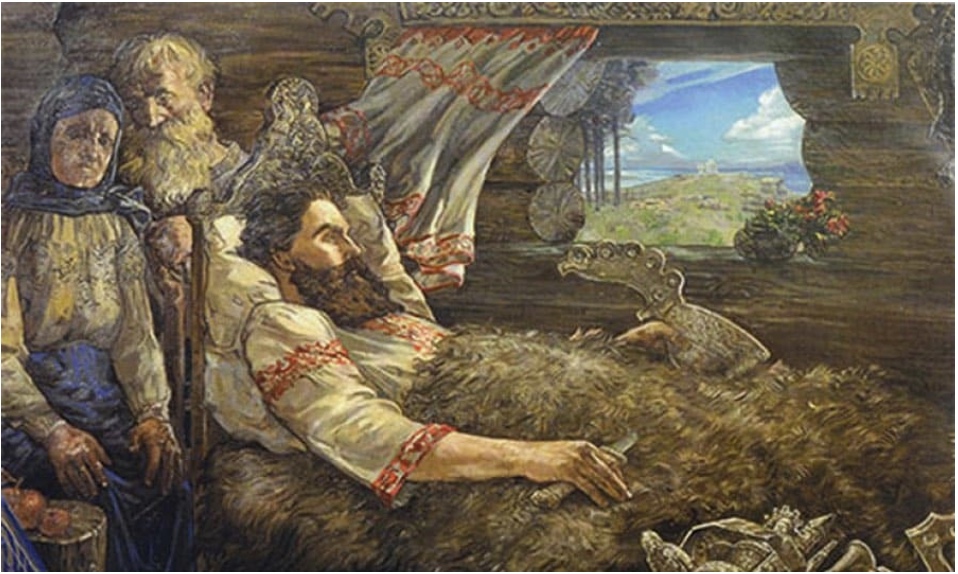An Introduction to Slavic Cosmology and Herbalism
by Naturopathy student, Elena Ageyeva
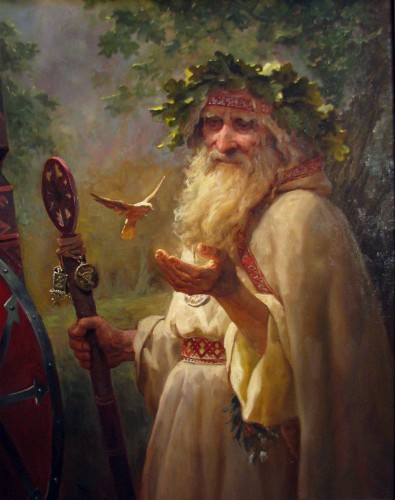
Slavic culture is one of the oldest cultures in the world. According to many sources, slavic people have common ancestors (Aryan race) with those now living in modern India and Iran. This link has been confirmed by genetic studies as well as linguistic and tradition similarities. Some Russian words even have Sanskrit counterparts, including one of the most recognisable words – Vedas. The verb that comes from this word (ведать) means “to know and understand”.
The culture of pre-Christian Russia and Eastern Europe is often referred to as Slavic Vedism. It is a wholistic understanding of the world, which recognises micro and macrocosm similarities and connectedness of everything in the nature. People realised that the interests of everyone cannot be above the interests of the person, but at the same time each person should be working for the good of the community — like the cells work in the body, and are nourished by it.
Slavic Vedism teaches that there is just one god, which is expressed in different natural concepts, phenomena or physical objects and is connecting the entire universe together. People viewed nature as their home and were seeking to cooperate and understand it, not fight or conquer it, in the same way that you would not fight your own home.

Nature is the Temple
Slavs were very aware of the nature’s sun and moon cycles and solstices and equinoxes, which coincided with major celebrations. Many other minor dates were recognised and taken into account when doing agricultural work or performing certain rituals.
The gods themselves were rarely personified, because they did not represent particular entities, but more like concepts which make up the world: like the gods for each equinox and solstice, which were also seen as the representations of the Sun that goes through its yearly cycle of birth, childhood, maturity and death.
Trees (especially oaks), big stones, sacred water sources were as much praised and respected as idols of the gods that were sometimes (but not always) put up. Nature itself was considered to be a temple and its resources were used with care and only as much as needed — exploitation was not allowed. Everything in nature and even inanimate object were believed to have a spirit inside them, but only man had a soul that he could develop and build.
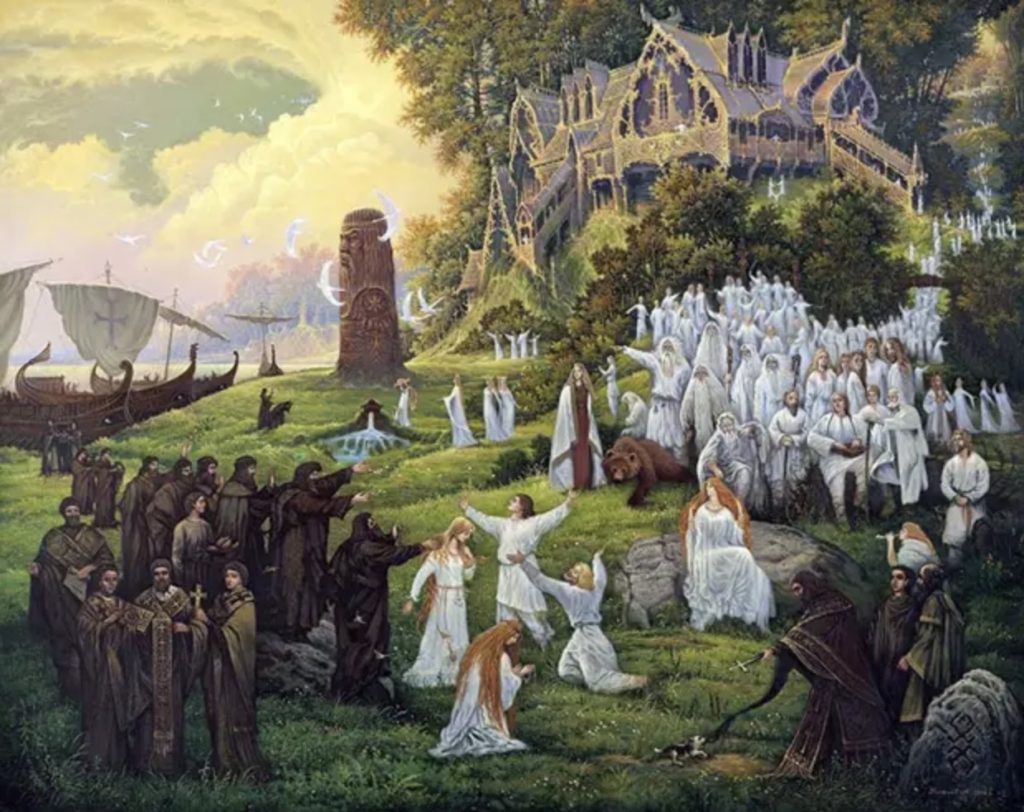
Relationship with the Gods
People considered themselves to be children of gods and so were potential gods themselves, which meant that they realised their ability to create their own reality and were working towards it, while studying and following the universal laws of the Universe.
They also considered themselves responsible for the world around them and treated it with respect and care. This also meant that people only asked for help in the rare and important circumstances, but more often asked for guidance, i.e. showing they how to do something instead of asking for something to be done.
Sacrificing animals and sometimes people to the gods was not practiced in true Slavic Vedism and instead fruit, vegetables, flowers, grains or milk were used to thank the gods and spirits.
The knowledge was accumulated and passed on by sages, who were at the same time healers, mages and herbalists, who were the most knowledgeable among the community. When Christianity was instilled, temples and most of the written evidence was destroyed and many sages were killed. The change in the calendar (Julian and then Gregorian calendars) also led to a mix up and confusion about many significant dates. This led to the loss of the knowledge and most of what we know now comes from the very few remaining documents and from the knowledge that was passed on by the word of mouth along with the archaeological objects of everyday life, which have many patterns and symbols on them that give clues to the culture of that time.
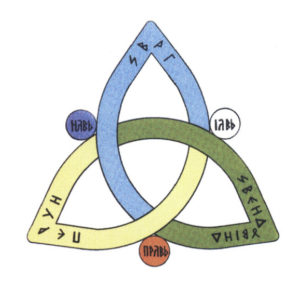
Triune World’s Structure
The world has been seen as a union of three realms:
Yav’, Prav’ and Nav’ (apostrophe indicates soft sound).
- Yav’ (colour white) is the materialistic and earthly realm, the one where people live physically.
- Nav’ (blue) is the energetic realm, where ancestors, gods, energetic entities and souls that are about to go to Yav’ reside. The soul was believed to be immortal and could come back to Yav’ again.
- Prav’ (this word is similar to the word “pravo”, which means “right” in English, with the same range of meanings) is the universal law, which was connecting both realms. Represented by the colour red. Lives in both Yav’ and Nav’ were equally important and were supposed to be used for inner growth and development.
Slavic people considered themselves “pravo-slavnye”, which means those who follow and praise Pravo or Prav’ — the universal law of being, the moral principles, the true knowledge that leads to the good. This is probably where the description of these people as “slavic” comes from. Slavs had high moral values and were advocating faith and integrity, which can also be seen in the totem animals and characters of many fairy-tales such as Swan, Wolf, Stork and Falcon.
The colours of these 3 realms are also common on the flags of slavic countries.
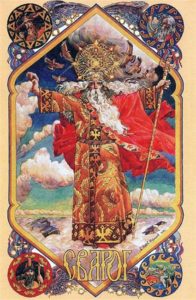
Triunity of the world runs through the god pantheon as well – there were 3 main gods. Svarog – the ultimate creator, the creative mind (consciousness) the father of gods, the god of Kin and Generation, the beginning and the source of life. His element is Air. Perun — the god that leads everyone by the law of Prav’, the god of movement and change, the force that transforms the universe, the active energy. His element is Fire. Sventovid – the god of light that helps people be in the real world and gives life, life force (Yav’). His element is Earth. This god is also linked to the Water element since all the rivers flow through the soil. At the same time all these gods are considered to be just the expressions of the one, Svarog, so there is no real division. Svarog is similar to the Sanskrit word Svarga, which means heaven. This tri-une concept is also applicable to the agricultural seasons – sowing season, harvesting season and soil resting season.
In Indian Vedas, the analogous trilogy is 3 gunas and 3 gods (Brahma-Vishnu-Shiva).
The antagonistic concepts also existed, such as Belobog and Chernobog (White God and Black God), which were considered to be two sides of being, like day and night. They were not good and evil as such, but more like forces that are constantly opposing each other to create balance and go hand in hand, like day and night.
Makosh was the goddess of Moon and one of the women’s goddesses, especially of those who were weaving the cloth, because Makosh was weaving the fate of people using silver strings. The chief female Goddess was Lada, and was dealing mostly with women’s affairs, whereas her daughter Lelya was dealing with the affairs of young women and girls.
Slavic clothes, houses and everyday objects were full of sacred symbols that were representing certain entities or protective amulets, but some were also related directly to gods. The two symbols on the right show the star of Svarog (left) and the star of Lada (right).
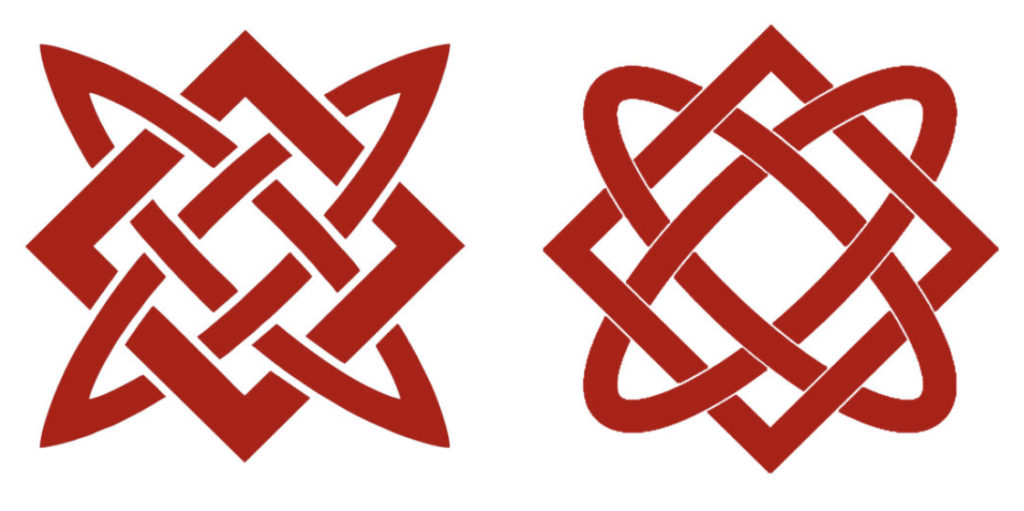
Significant Numbers
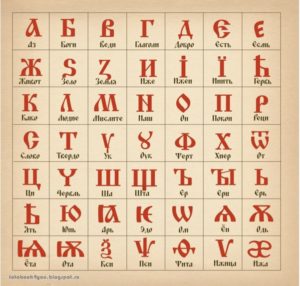
Apart from 3, umbers 9 and 12 were also considered significant — special spells and rituals were performed 9 or 12 times or with 9 or 12 ingredients. One of the strongest herbs was девясил (elecampane) — the name combines number 9 (девять) and the word strength (сила).
Number 40 was also sacred in many ways, but the part of interest is the Slavic name for Sage — сороканедужник, which combines the number 40 (сорок) and disease (недуг). Both Elecampane and Sage were part of the ritual brew used to praise the gods.
Another magic number was 7, which is the number of traditional Matreshka dolls (the dolls that go one inside another) and the grid size of the old slavic alphabet (Bukvitsa). Matreshka doll layers are thought to signify the 7 energetic bodies.
The alphabet grid size is also not random and correlated to all the natural phenomena that relate to number 7 (colours, notes, chakras etc.), but moreover, each letter was not just a letter, but a concept and reading Bukvitsa line by line vertically, horizontally and even diagonally reveals much about the Slavic understanding of the world.
Cleanliness and Purity
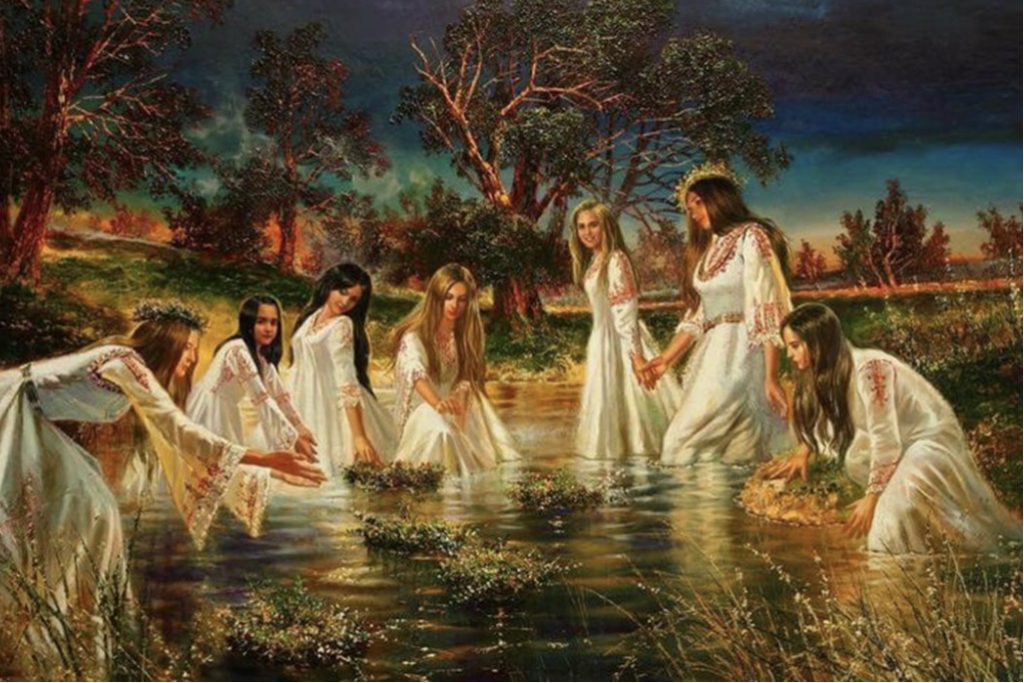
Cleanliness in both the physical and metaphorical sense was a central part of the Slavic healthcare regimen and people washed themselves in the morning and in the evening while saying prayers. Kupalo was the Slavic god of cleanliness and Health. He was celebrated during summer solstice by going to saunas, washing oneself in the river or lake and jumping over the bonfire, which was also considered cleansing. Number 6 was the number of Kupalo, it resembles a drop of water and represents June, when Kupalo was celebrated, as well as the number of rays the snowflake (structured water) has.
Day and night of Kupalo were considered the best time to pick certain herbs, especially the ones that had magical properties. There were several customs and rituals linked with herbs, such as making a crown out of them and using it for various things including cleansing and predicting whether or not the woman will find her partner in the near future.
This devotion to cleanliness that went into the Christian society helped Slavic countries to avoid certain medieval epidemics or be hit by them to a much smaller extent. Every house or a small group of houses had a private sauna and busy places in the city such as ports and markets also had communal saunas nearby. Sauna visits included rituals, for example hot water with herbs was used to put over hot stones and create healing steam as well as a special broom made most commonly of birch twigs was used to hit each other until the skin is red. In winter people were coming out of sauna and plunging into the snow or cold water, in summer they poured buckets of cold water over each other or jumped into rivers.
Cold weather and cold water were thought to be conducive to health — there was even a saying “winter cold keeps everybody young”. Those who lived in the north and Siberian parts of Russia were using snow and cold water on children since they were very young to get them used to harsh conditions. They also used many animal-based remedies (blood, fat and liver) taken from the local animals and fish since herbs were unavailable for most of the year.
Materia Medica
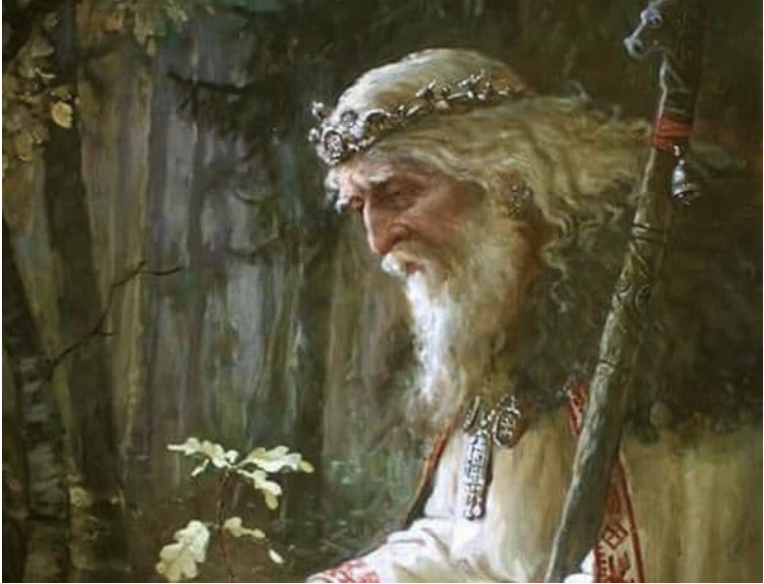
Medicine was practiced by both men and women. Such people were called “ved’ma” or “vedun” (among other names), which has the obvious connection to the word Veda, i.e. the one that knows. They knew about medicinal properties of the plants and were able to treat difficult cases of illness. Simple cases could be treated at home, as people, even in medieval times had extensive knowledge of the remedies for everyday problems.
Common illnesses included various injuries during hunting or wars, colds, GI issues, and certain infectious diseases. People who lived in the North faced much harsher conditions and frostbites were also common, along with the eye injuries and irritations due to the snow sparkling in the sun. Insect bites were common, as forests were housing a large number of mosquitoes, bees and ticks.
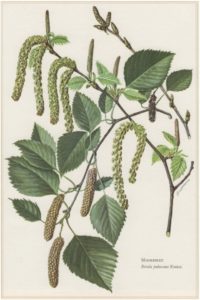
Special type of moss was known to be a good antiseptic and was used on wounds to stop bleeding. Birch, garlic, onion and rose hips were among the most well known and readily available plants for medical needs. Onion and garlic were used universally against almost any ailment and were praised for their medicinal powers. Onion was known to ward off scurvy and was always packed for any long journeys, especially the ones taken by sea. Birch was used in many ways and every part of it was known to have medicinal properties. Pumpkin seeds and wormwood were a common remedy against intestinal parasites.
Various oils were also used for both culinary and medicinal needs. The most well-known ones were hemp, linseed and nut oils (made of forest nuts, such as pine and hazel nuts). Honey was a central ingredient in both medicine and culinary and was known to be a potent remedy.
Berries were eaten very extensively, and forests offered a large range of those: rowan berry, cowberry, cloudberry, juniper berries, blackberry and many others.
The range of plants used was quite large, so I will give the examples of several important plants below.
Calamus
Calamus was known to strengthen the body, clear the lungs and ward off colds, clean the water, treat ulcers and eye problems among other things. It was also used in salads, along with many other wild herbs. One example of such salad: calamus, sorrel, dandelion greens, nettle, barbarea (yellow rocket), marjoram. Calamus was though to have affinity to the willow and if the hands are washed in the willow bark decoction, Calamus would not be upset that it was harvested — all herbs were known to have consciousness and it was always respected and taken into account when dealing with them.
Juniper
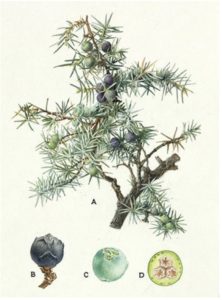 Juniper was thought to represent triunity – three needles in a bunch and three seeds in a berry. It was called Perun’s staff and was thought to have magical properties — cleansing the body, freeing the soul and warding off evil spirits. Physical properties included strengthening the body, healing wounds, cleanse the body. Seeds were used for insect and snake bites, juniper ashes mixed with dew or spring water were used for skin conditions. Every plant was known to have a wide range of applications,
Juniper was thought to represent triunity – three needles in a bunch and three seeds in a berry. It was called Perun’s staff and was thought to have magical properties — cleansing the body, freeing the soul and warding off evil spirits. Physical properties included strengthening the body, healing wounds, cleanse the body. Seeds were used for insect and snake bites, juniper ashes mixed with dew or spring water were used for skin conditions. Every plant was known to have a wide range of applications,
but was never used as a panacea, since every patient needed their own tailored formula.
St John’s Wort
St Johns’s Wort was also one of the strongest herbs and used in many formulas. Its photo sensitising effects were also known, so any formulas involving the herb were either given in the evening or used only as compresses and baths, so that the effects are more gentle. It was not put together with herbs like mint, due to possible hepatotoxic effects.
Red Clover
Red clover has been used in place of honey in formulas where the honey is needed, but cannot be used, for example, for diabetes.
Chamomile
Chamomile is a gentle herb that was used to harmonise many formulas.
Greater Celandine
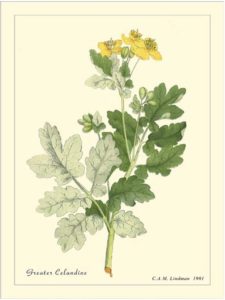 Greater Celandine was a well-known medicinal herb, but was used very cautiously due to its toxicity at greater doses. The plant was thought to have strong magical properties and its harvest was always accompanied with special rituals and prayers. The plant was not touched with bare hands and woollen mittens were used for harvesting. The plant should also not be touched by iron, so copper spade was used to dig out the roots and copper vessels were used to work with the plant material. I remember that when I was little, it was a common knowledge that yellow juice of Celandine is a good remedy for warts.
Greater Celandine was a well-known medicinal herb, but was used very cautiously due to its toxicity at greater doses. The plant was thought to have strong magical properties and its harvest was always accompanied with special rituals and prayers. The plant was not touched with bare hands and woollen mittens were used for harvesting. The plant should also not be touched by iron, so copper spade was used to dig out the roots and copper vessels were used to work with the plant material. I remember that when I was little, it was a common knowledge that yellow juice of Celandine is a good remedy for warts.
Herb Collection Rituals
The person was always questioned thoroughly about their conditions and the state of their skin, eyes and mouth was checked. It was preferable for the patient to stay with the healer for a few days, during which the healer could observe the patient and note anything the patient himself might not see, or might not be comfortable telling. If the patient could not stay with the healer for the treatment duration, they would always come back for the follow ups. The healer was always a powerful and trustworthy figure, who was able to build a strong relationship with a patient and give him hope and reassurance that the condition will improve.
Herb collection involved many rituals. Herbs were seen as friends and were treated with love and respect. When collecting the herbs, the healer must have good intentions, otherwise the herb will not be as potent and might even make things worse. Before harvesting the herb, healer would always say a prayer, in which they would ask for permission, assure the herb of their good intention and ask for forgiveness for hurting the plant. It was important to say this prayer from the heart, because plants were believed to feel the person and if the request was not genuine, they would not help. The plants connected to people through their emotions and feelings, not through the mind. Over-harvesting was a taboo and was looked at with all seriousness, especially when it concerned trees. Many trees were seen as powerful entities, who were governed by their own spirits (or consciousness). They could provide help and guidance in certain circumstances. They were respected and cherished.
Healers were usually working locally and knew very well their area and which herbs to find where. Local herbs were considered to be better for local people and each area had its own slightly different herbal portfolio. They also did special rituals to build a relationship with the meadows and forests where they collected herbs. These included little food offerings (such as bread and milk), spending time at the meadow talking to the herbs and getting to know them, sowing seeds, and initiation rituals that included fasting and special herbal decoctions to connect with the spirit of the forest or meadow. That spirit was then called on if the healer needed advice for patient treatment. It usually came in the form of the little meadow animal that was overtaken by the spirit for the time the spirit was helping. The animal would bring the required herb for the patient that needed help. These beliefs are similar to the druid beliefs in Celtic cultures.
Herbal Formulas
The herbs that were used straight away were collected with their dew on full or waning moon, but the ones for drying were collected once the dew was gone on new or waxing moon. Leaves and flowers were stored in cloth bags with the access to
air, while the roots were stored in ceramic pots with lids (closer to the earth element, where they came from). Moon was known to have an effect on the herbs and moon cycle was strictly followed to make sure the herbs collected are in their prime healing power. Astrology was also taken into account and the impact of heavenly bodies on herbs was known, but the astrological calendar was not the same as the one used in the Western astrology. Cosmic energies gave the herbs their holistic healing powers, which would not be present if the chemical elements of the herb were simply combined in the vial.
Dew from various herbs was also extensively used and was known to be a very powerful medicine. It was usually used on its own or in formulas that do not require heating.
When preparing a herbal formula, weaker or gentler herbs were put in first, followed by the stronger ones, otherwise stronger herbs did not allow gentler herbs to fully realise their potential in the formula. For example, the asthma formula would be prepared in the following order (all herbs were mixed into honey over a period of a few days): lemon balm, linden blossom, yarrow and elecampane. Examples of herb ordering according to their energetic potential is given below (gentle first):
1. Chamomile, lemon balm, greater burdock, plantain
2. Nettle, red clover, dandelion, calamus, cornflower
3. Valerian, Celandine, St John’s Wort, lingonberry, elecampane
Aerial parts of the plant were thought to carry medicine, roots carried energy or power and bark carried the movement of that energy, and formulas were created accordingly. In the formula, weaker and gentler plants create a perfect environment for the main plant to work to its full potential: they, so to say, pave the road for the king.
History of Medicine
Slavic healers were known to use many herbal potions, which they were combining with saunas and other water procedures, which were a significant part of treatment. Written evidence is scarce, even though people (including those not well off) were literate both in the pre-Christian and ancient Russia, which can be deduced by an indirect evidence, so majority of the knowledge was passed on from teachers to apprentices. Information is gathered from the medieval scrolls and books and from the traditions, rituals and knowledge that reached us by the word of mouth. The rest has been lost during wars, fires and other disasters.
The works of Hippocrates were known in the medieval Russia and dietetic advice was also given, although the importance of moderation was probably the main motive. Some chronicles contain dietetic recommendations for different times of the year, such as eating warming foods (radish, mustard, onion, garlic, honey) in winter. Ghee was also known and widely prepared for culinary and medical
purposes. These recommendations survived past ancient times and were extensively used in medieval times and beyond. Special spells that were used alongside water healing and herbal preparations also had an important place. The sickness itself was seen as a result of not living right, which later merged into Christian philosophy, where the sickness was thought of as a punishment for sins. Medieval times saw a big shift towards using methods that were in use in both European and Arabic countries at the time, so names of Hippocrates, Galen and Paracelsus were known and their teachings were practiced by both domestic (less so), and foreign healers. Growing contact with other cultures has shifted the medical model towards the Western style, but many traditional methods of healing remained and were used as part of the official medicine in USSR. Sanitariums were built in the seaside and mountains and offered water treatments, plenty of fresh air, exercises, physiotherapy and other non-invasive and non-chemical treatments to its visitors along with some of the more modern medicaments. Modern Russia is seeing a huge rise in the interest in natural medicine, but officially it is being pushed very hard into the “evidence-based medicine” doctrines. There is hope though as people are increasingly turning towards natural methods of healing and are studying gentle traditional medicine.
References
Славянский Ведизм и Законы Прави. [Slavic Vedism and the Laws of Prav’] В. Гнатюк, Ю. Гнатюк
Золотая нить. [Golden Thread] С. Жарникова
Медицина Древней Руси (сборник). [Medicine of the ancient Russia] Н.А. Богоявленский, М. Мирский
Тайны русских знахарей. Целебные составы, обряды, ритуалы. [The secrets of Russian healers. Healing formulas, traditions and rituals] В.Н. Ларин
